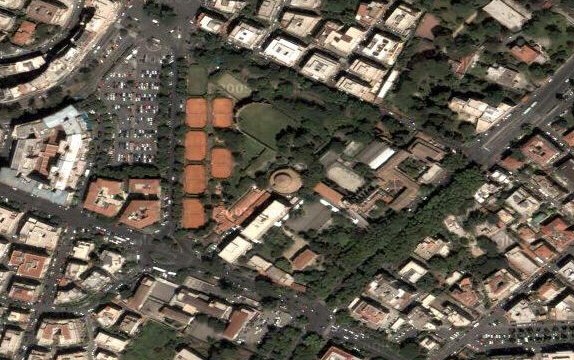Helena Augusta | Basilica Santa Agnese Rome | 1 |
Cemetery of St. Agnes. The body of St. Agnes, who suffered martyrdom probably under Valerian (253-60), was buried by her parents "in praediolo suo", i.e. on a small property they owned along the Nomentan Way. There was already in this place a private cemetery, which grew rapidly in size after the interment of the youthful martyr. The excavations carried on since 1901, at the expense of Cardinal Kopp, have revealed a great many fourth-to-sixth-century graves (formae) beneath the sanctuary of the basilica. The cemetery (three stories deep) is divided by archaeologists into three regions, the aforesaid primitive nucleus (third century), a neighbouring third-century area, and two fourth-century groups of corridors that connect the basilica of St. Agnes with the ancient round basilica of St. Constantia. It is not certain that the actual basilica of St. Agnes, built on a level with a second story of the catacomb, is identical with that built by Constantine; there is reason to suspect a reconstruction of the edifice towards the end of the fifth century. St. Damasus composed for the tomb of Agnes one of his finest epitaphs. Symmachus (498-514), and Honorius I (625-38), restored the basilica, if the former did not reconstruct it; to the latter we owe the fresco of St. Agnes between these two popes. In the sixteenth century, and also in the nineteenth (Pius IX, 1855), it was again restored; in 1901 (25 Nov.) new excavations laid bare the heavy silver sarcophagus in which St. Pius V had deposited the bodies of St. Agnes and St. Emerentiana. In the neighbouring Coemeteium majus (accessible from the cemetery of St. Agnes through an arenaria, or sand-pit) is the famous crypt or chapel of St. Emerentiana, opened up in 1875, at the expense of Monsignore Crostarosa, and identified by De Rossi with the Coemeterium Ostrianum, the site of very archaic Roman memories of St. Peter, a position now strongly disputed by his disciple Marucchi (see below, Cemetery of Priscilla). In the vicinity of the crypt of St. Emérentiana is an important arcosolium-fresco representing the Blessed Virgin as an Orante, with the Infant Jesus before her. It belongs to the first half of the fourth century, and is said by Marucchi (II, 343) to be almost the latest catacomb fresco of Our Lady, a kind of hyphen between the primitive frescoes and the early Byzantine Madonnas; it seems at the same time a very early evidence of the adorational use of paintings in public worship (Le Bourgeios, Sainte Emerentienne, vierge et martyre, Paris, 1895). |
III century
Several brickstamps on the roof of the basilica.
314-37
Foundation of a basilica with a baptistry by Constantine the Great.
337-50
Acrostic of Constantina, in the primative basilica, preserved in the manuscripts of Prudentius, Peristephanon
349
Sepulchral inscription in the catacomb gallery behind the high altar.
|
At the same time he built the basilica of the holy martyr Agnes1, at the request of Constantia2, his daughter, and a baptistery3 in the same place, where both his sister, Constantia, and the daughter of Augustus were baptised by Silvester, the bishop, where also he presented the following gifts: |
1. The church of Sant' Agnese on the Via Nomentana, erected over the traditional tomb of the virgin martyr, was rebuilt by Honorius I in the seventh century, so that it is now uncertain if any part of the present structure belongs to the age of Constantine.
|
|
1999.03.31 |
Quondam © 2014.04.12 |
